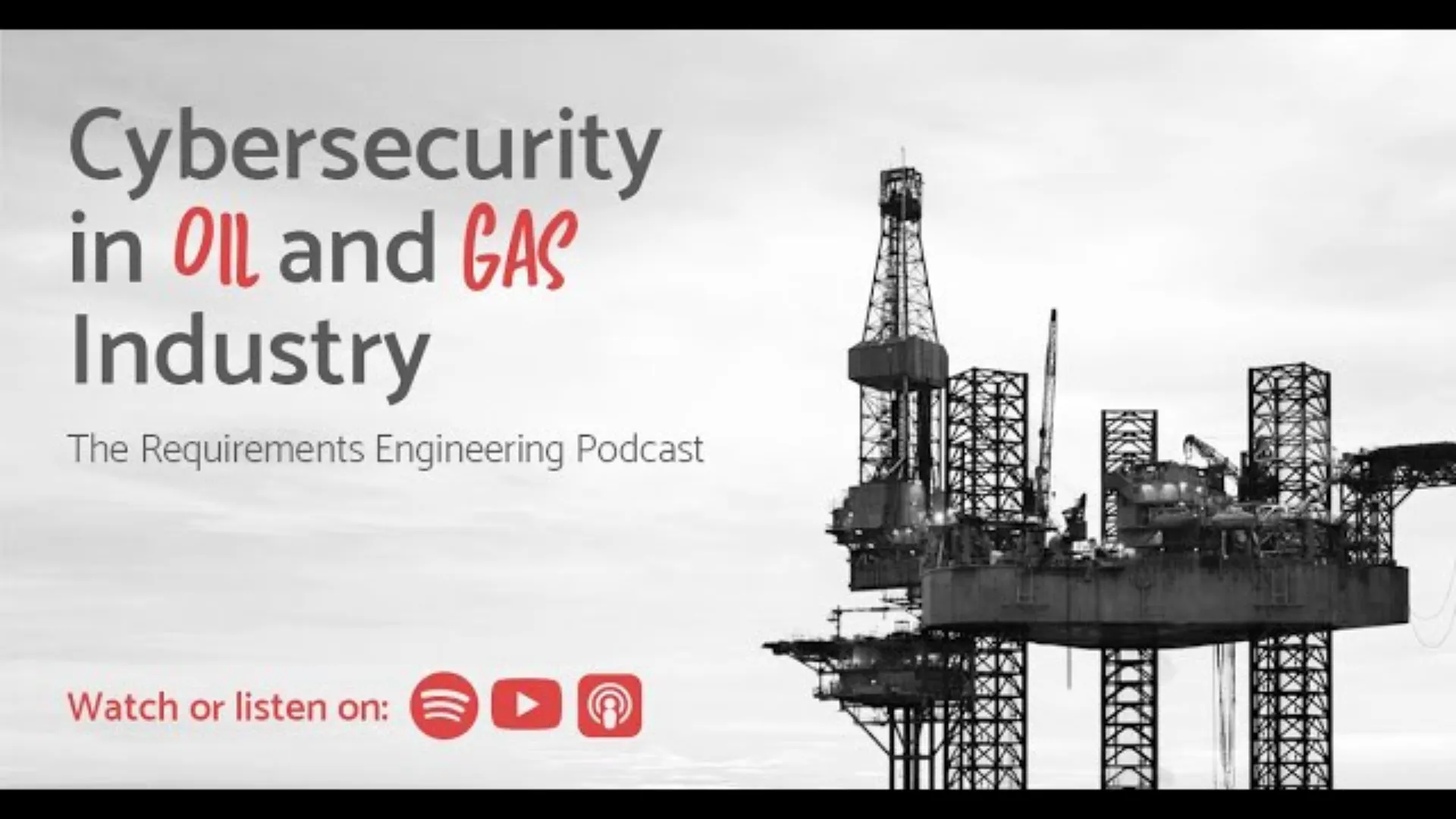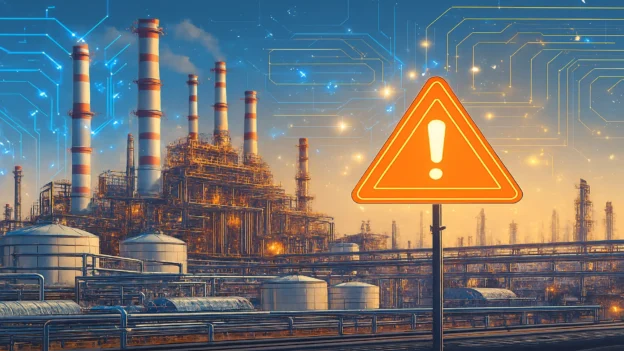Table of Contents
- Digital resilience and OT/IT convergence
- Cybersecurity governance and culture
- NIST framework applied to industrial environments
- OT security and defense in depth
- Threat intelligence and incident response
- Cyber risks in energy infrastructure
- Third party and supply chain management
- Human factor and organizational resilience
- Digital resilience indicators and metrics
- Conclusions
- References
- Frequently Asked Questions (FAQ) (FaQ)
Digital resilience is the ability to anticipate, resist, recover, and adapt to cyber threats without compromising industrial safety, the environment, or business continuity.
In the oil and gas industry, this resilience encompasses four interconnected domains: (1) operational technology (OT) that controls industrial processes, (2) information technology (IT) that manages communication and data flow, (3) data and analytics that preserve data integrity, and (4) the people and processes that underpin organizational response.
Global initiatives such as the World Economic Forum’s (WEF) Cyber Resilience in Oil & Gas and reference frameworks such as the API Cybersecurity Framework and the NIST Framework for Improving Critical Infrastructure Cybersecurity have driven the adoption of governance and cooperation policies that strengthen cyber resilience across the energy value chain.
Digital resilience and OT/IT convergence
The oil and gas industry operates mission-critical assets that define global energy infrastructure. Digitization, smart sensors, real-time analytics, predictive maintenance, and cloud systems have increased efficiency, but also exposure to cyber risk.
OT/IT convergence has redefined the boundaries of industrial cybersecurity, eliminating traditional security boundaries. Previously isolated industrial control systems (ICS) now communicate with corporate networks for real-time production analysis and decision-making. This integration creates new attack surfaces and requires coordinated defense between both environments.
Risks arising from convergence
- Lateral movement: a vulnerability in IT can serve as a bridge to OT systems.
- Conflicting priorities: confidentiality prevails in IT; availability and integrity prevail in OT.
- Operational dependency: cyberattacks can cause serious physical or environmental disruptions.
Digital resilience acts as a continuity framework, ensuring that operations can be maintained or quickly recovered without compromising industrial security.
Cybersecurity governance and culture
Executive leadership is essential for building cyber resilience. Risk management must be integrated into the strategic plan, addressing industrial cybersecurity as a cross-cutting business risk and not just a technical one.
Critical organizational factors
- Governance: The board of directors and senior management must define risk appetite, allocate resources, and monitor metrics.
- Digital culture: Establish ongoing training programs, phishing drills, and incentives for reporting incidents.
- Maturity and metrics: Adopt assessment models based on the NIST Framework and the ISA/IEC 62443 series.
A zero trust mindset reinforces prevention, encourages vigilance, and strengthens business sustainability.
NIST framework applied to industrial environments
NIST proposes a framework that structures industrial cybersecurity and digital resilience into five functions: identify, protect, detect, respond, and recover. Its adaptation to OT allows critical assets to be prioritized and operational continuity to be maintained.
Practical implementation of the NIST framework
- Identify: inventory all OT assets, dependencies, and critical systems.
- Protect: apply Zero Trust (never trust, always verify), network segmentation, and privileged access control.
- Detect: Integrate OT/IT telemetry and behavioral analytics (User and Entity Behavior Analytics, UEBA).
- Respond: Execute specific incident response (IR) playbooks with trained teams.
- Recover: Restore operations, validate data integrity, and verify system traceability.
OT security and defense in depth
OT security protects the systems that operate valves, compressors, pumps, and critical processes in refineries and terminals. Its priority is to ensure operational availability, data integrity, and physical security within OT systems.
Zero Trust Architecture in industrial networks
The Zero Trust model segments the network into controlled zones (microsegmentation), requiring continuous authentication and real-time monitoring.
- Least privilege access: users only access what is strictly necessary.
- Multi-factor authentication (MFA): standard requirement for remote access.
- Micro-segmentation: divides OT networks into isolated domains, reducing the impact of intrusions.
Essential technical measures
- Segmentation by zones and conduits (ISA/IEC 62443).
- Industrial firewalls with communication whitelists.
- Integrity monitoring in PLCs and RTUs.
- Immutable and verified backup copies.
- Traffic monitoring in Modbus, DNP3, and OPC-UA protocols.
Threat intelligence and incident response
The speed of detection and response determines cyber maturity. Industrial Security Operations Centers (SOCs) combine OT/IT visibility, event correlation, and artificial intelligence to detect anomalies before they impact production.
Industry intelligence and collaboration
- Threat Intelligence (TI): The Oil and Natural Gas Information Sharing and Analysis Center (ONG-ISAC) facilitates the exchange of indicators of attack (IoA) and adversarial techniques.
- Incident response: Execute IR plans with clear roles, annual drills, and coordination between operations, legal, and communications.
- SOAR automation: orchestration and automated response platforms reduce containment times.
The following video from Viseru Solutions presents a technical overview of the main industrial cybersecurity challenges in the oil and gas sector, highlighting OT/IT convergence, threat intelligence, and incident response.

Cybersecurity in the oil and gas industry.
Cyber risks in energy infrastructure
Energy infrastructure is one of the main targets of global cybercrime due to its strategic value, the critical nature of its operations, and its growing digital interconnectivity. In the oil and gas industry, cyber risks are no longer exclusively an IT problem, but have become an operational risk capable of directly affecting process safety, production continuity, and public confidence.
Predominant threats
- Industrial ransomware: seeks to paralyze critical operations by encrypting systems and extorting money.
- Process data manipulation: alters control parameters (pressure, temperature, flow), compromising data integrity and physical safety.
- Third-party compromise: exploits vulnerabilities in contractors, suppliers, or remote access points with limited maturity in industrial cybersecurity.
- Digital sabotage: aims to disrupt protection systems, damage equipment, or disable security controls.
According to the World Economic Forum, more than 60% of companies in the sector have recently suffered cyber incidents, underscoring the urgency of strengthening digital resilience and cross-sector cooperation to protect energy infrastructure.
Recent cases of cyberattacks in the oil industry
Cyberattacks against energy companies continue to evolve, affecting both operators and critical service providers. In recent years, several incidents have highlighted the fragility of the sector’s digital chain.
- Halliburton (2024): In August 2024, Halliburton confirmed unauthorized access to its internal systems, resulting in the exfiltration of sensitive corporate information. Although no operational disruptions were reported, the case underscores the vulnerability of technical support services and the need for ongoing audits of third parties and contractors. The incident reinforced the need for digital resilience and robust industrial cybersecurity strategies within the supply chain. Source: The Register, August 2024.
- Colonial Pipeline (2021): The ransomware attack that forced the temporary shutdown of the main fuel pipeline in the US continues to be a benchmark for the industry. Its impact demonstrated how an IT breach can spread to OT systems, disrupting supply and highlighting the need for network segmentation and Zero Trust strategies in critical infrastructures.
Third party and supply chain management
Cyber resilience also depends on external links. Contractors, OEMs, and suppliers must align with the same security standards as the main organization.
Recommended controls
- Require an up-to-date SBOM (Software Bill of Materials) to identify vulnerabilities.
- Require multi-factor authentication for remote access.
- Audit compliance with the NIST Framework and ISA/IEC 62443.
- Validate verified backups and restoration.
- Establish continuous monitoring of cyber compliance and performance.
Third-party management aligned with international standards reduces vulnerabilities and strengthens the digital resilience of the energy ecosystem.
Human factor and organizational resilience
People remain the most important defense, but also the most vulnerable. Human error, lack of training, and social engineering can override even the best security architecture.
Key strategies
- Continuous training programs for operators, engineers, and supervisors.
- Phishing exercises and OT simulations to reinforce early detection.
- Segregation of duties and control of privileges.
- Culture of immediate reporting and effective post-incident communication.
A truly resilient organization combines technical skills, operational discipline, and an integrated and sustainable security culture.
Digital resilience indicators and metrics
Measuring resilience is as important as implementing it. Indicators allow you to evaluate the effectiveness of your industrial cybersecurity program.
Key indicators
- MTTD/MTTR: mean time to detect and mean time to respond.
- OT segmentation index: percentage of critical assets protected.
- Patch coverage: assets updated and without known vulnerabilities.
- Zero Trust compliance: users with MFA and reviewed access.
- Rate of IR drills performed: reflection of organizational preparedness.
Integrating these indicators into corporate governance transforms industrial cybersecurity into a strategic enabler of value, rather than an operating cost.
Critical digital resilience controls in oil and gas
| Control | Technical description | Framework or reference |
|---|---|---|
| OT/IT asset inventory | Updated registry of systems, firmware, and critical dependencies. | NIST – Identify |
| Microsegmentation | Separation of OT networks by secure and controlled zones. | ISA/IEC 62443 |
| Zero Trust (Never trust, always verify) | Granular access control, authentication, and continuous validation. | NIST – Protect |
| Vulnerability management | Regular scanning, CVE prioritization, and secure patching. | NIST/ISO 27005 |
| Threat intelligence | Use of NGO-ISAC and industry IT sources for early detection. | API/WEF |
| Incident response (IR) | Tested plans, defined roles, and interdepartmental coordination. | NIST – Respond |
| Immutable backups | Backups protected against tampering or malicious encryption. | ISA/IEC 62443 |
| OT traffic monitoring | Monitoring of industrial protocols (Modbus, DNP3, OPC-UA). | NIST – Detect |
| Training and awareness | Training in phishing, social engineering, and OT security. | ISO 27001 A.7 |
| Third-party auditing | Continuous evaluation of suppliers and secure remote access. | NIST – Supply Chain |
Conclusions
Digital resilience in the oil and gas industry represents the convergence of technology, processes, and organizational culture. It is not just about preventing attacks, but ensuring that, in the event of any incident, the energy infrastructure can recover without compromising safety, the environment, or operational continuity.
Adopting frameworks such as NIST and ISA/IEC 62443, implementing Zero Trust, strengthening threat intelligence, and consolidating a culture of industrial security are essential steps toward resilient and sustainable operations. In a context of accelerated digitalization, digital resilience is establishing itself as the new standard for industrial cybersecurity and sustainability in oil and gas.
References
- NIST SP 800-82 Rev.3: Guide to Industrial Control Systems (ICS) Security
- ISA/IEC 62443 Series: Industrial Automation and Control Systems Security
- ONG-ISAC: Information Sharing and Analysis Reports, 2025
Frequently Asked Questions (FAQ) (FaQ)
What is digital resilience in the oil and gas sector?
It is the ability to anticipate, resist, and recover from cyber incidents, ensuring security and operational continuity.
Why is OT cybersecurity essential?
Because it protects critical physical processes whose interruption can affect production, safety, and the environment.
How can companies improve their cyber resilience?
By adopting Zero Trust, applying the NIST Framework, managing vulnerabilities, and conducting incident response training.
What are the most common threats?
Industrial ransomware, process data manipulation, supply chain attacks, and digital sabotage.
What is the role of senior management?
To lead digital governance, allocate resources, and evaluate maturity metrics to sustain operational resilience.

